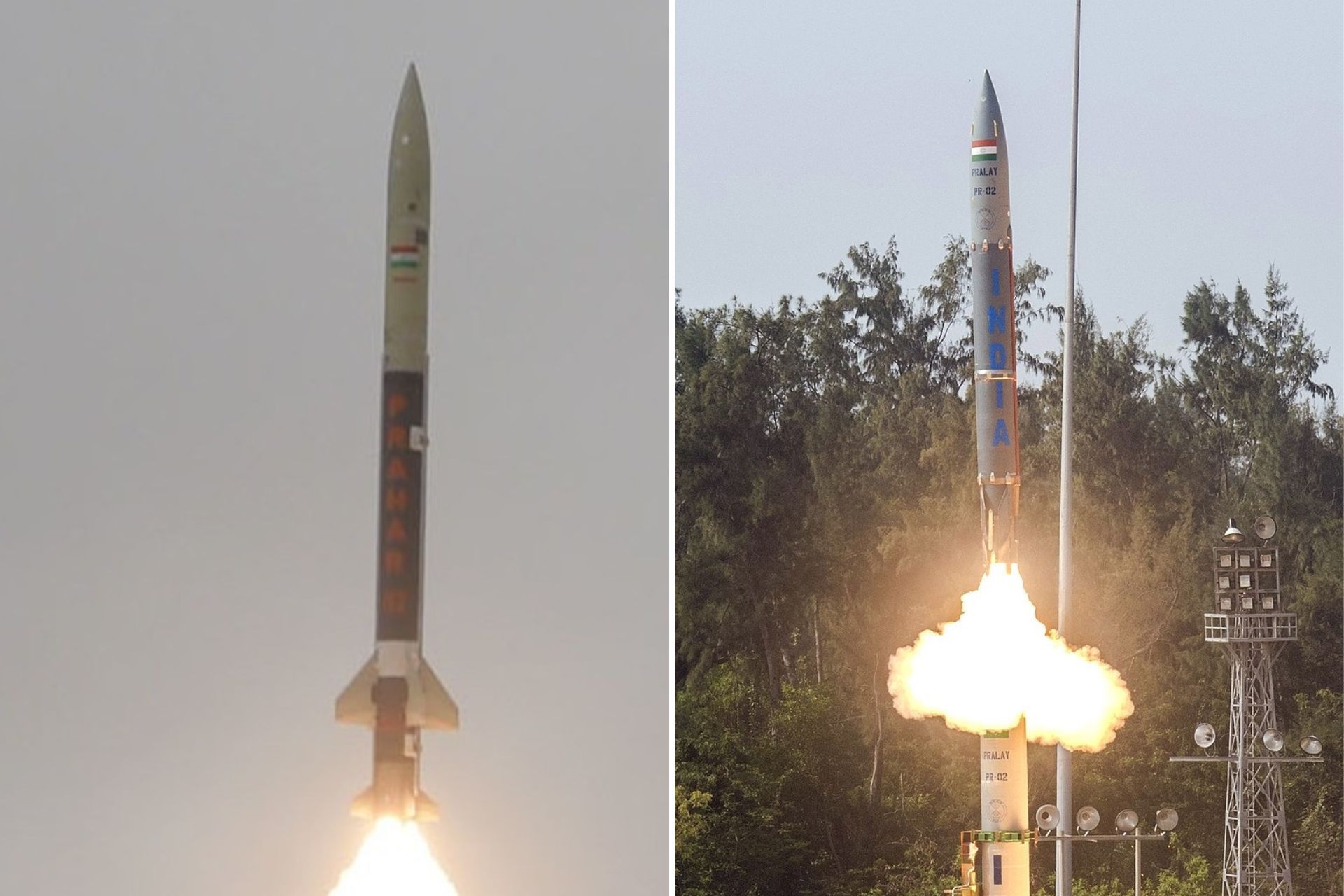Breaking News
Armenia Looks to India for Advanced Missile Systems Amid Rising Azerbaijani Threats.
According to the Indian Defence Research Wing (IDRW), as of July 5, 2024, Armenia is actively exploring options to enhance its missile capabilities by considering the acquisition of theater quasi-ballistic missiles from India. This move has been largely prompted by Azerbaijan's recent deployment of the Israeli-made LORA system during the final days of the 2020 Nagorno-Karabakh conflict. The LORA system, with its 400 km range and noted use against the Lachin corridor, has heightened Armenia's concerns over regional security dynamics. Follow Army Recognition on Google News at this link

The Indian Prahaar, short-range ballistic missile (left), and the Pralay short-range ballistic missile (right). (Picture source: CSIS/Wikimedia)
During the Aero India 2023 event, a memorandum of understanding was signed between Bharat Electronics and Israel Aerospace Industries for potential production of the LORA system in India, though this agreement is still in its early stages. Concurrently, Armenia is looking into procuring India's indigenous tactical ballistic missiles to counter regional threats. The Defence Research and Development Organisation (DRDO) of India has developed two main models of interest to Armenia: the Prahaar, with a 200 km range, and the Pralay, capable of reaching up to 500 km.
The incorporation of such systems could significantly bolster Armenia's defensive posture, especially considering the country's existing deployment of India's Pinaka multi-barrel rocket launchers with a 90 km range. However, the sensitive nature of this potential transaction, combined with licensing agreements and alignment with national defense priorities, renders the outcome uncertain.
Beyond partnerships focused on armament acquisitions and technological exchanges, the military relations between India and Armenia also extend to training and joint exercises, thereby enhancing their defense collaboration. Both nations have expressed interest in exchanging expertise in military training and combat tactics, which could include officer training programs and workshops on specific defense-related topics. Additionally, they are looking to cooperate in the fields of cyberdefense and information security, acknowledging the increasing importance of digital security in modern defense.
As regional tensions continue, Armenia's quest to boost its military capabilities reflects a broader strategy to maintain a power balance in its vicinity, particularly with Azerbaijan. The tensions between Azerbaijan and Armenia primarily revolve around Nagorno-Karabakh, a region predominantly populated by Armenians but located within internationally recognized Azerbaijani borders.
Following a de facto autonomy achieved after a deadly conflict that began in the late 1980s and escalated after the Soviet Union's collapse, the region witnessed a resurgence of violence, especially during the 2020 war, where Azerbaijan reclaimed significant territory. Russia, traditionally a key player in the Caucasus, plays an ambiguous role: maintaining military and economic cooperation with both countries while attempting to position itself as a peace mediator. It deployed peacekeeping forces in the Nagorno-Karabakh region after the 2020 ceasefire, asserting its regional influence while aiming to stabilize the situation without overt partisanship. However, in light of the war in Ukraine, its influence appears to be waning.


























